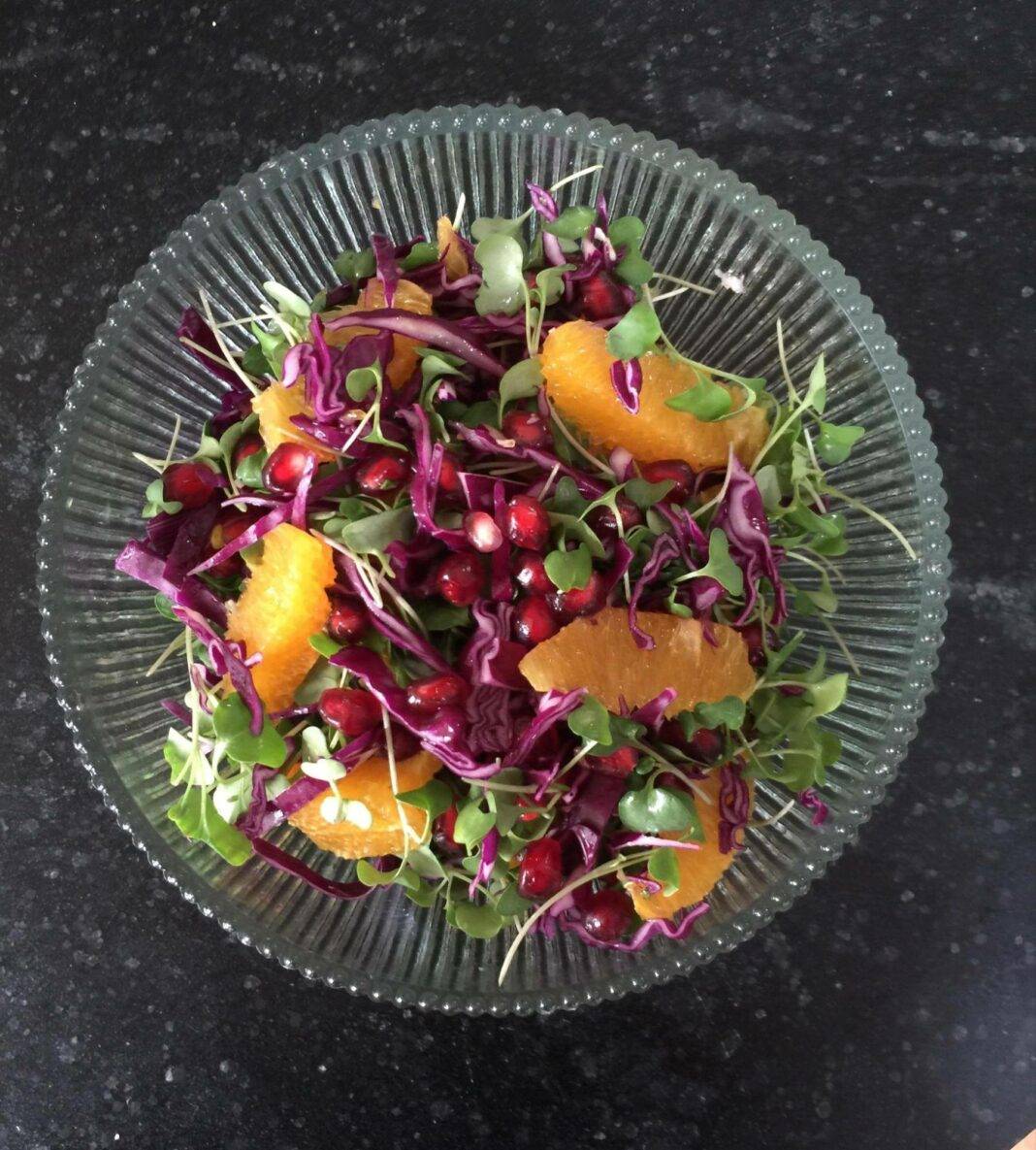In the depths of winter when local lettuce is a distant memory, chef Catherine Walthers goes searching for other interesting greens. Her current favorite is microgreens — especially broccoli or arugula. This is a super-easy salad to showcase them. Try growing microgreens at home this fall/winter with these easy tips.
Print
RECIPE: Cabbage and Microgreen Salad with Citrus and Pomegranate Seeds
- Yield: Serves 4
Ingredients
Salad:
- 1/2 pomegranate, seeded
- 3 navel oranges, segmented (see note below)
- 1/2 (small or medium) head red cabbage, sliced as thinly as possible by hand or using a mandoline
- 2 cups broccoli microgreens (or 1 container), rinsed and spun dry
Citrus Vinaigrette:
- 2 tablespoons fresh orange juice (usually collected when cutting the oranges)
- 1 tablespoon fresh lemon juice
- 1 teaspoon balsamic vinegar
- 1 teaspoon finely minced shallot (optional)
- 2 tablespoons extra-virgin olive oil
- Salt, to taste
Instructions
- Open the pomegranate in the bowl you will be serving the salad in. Remove any bad seeds or white pith. Cut orange into segments between the pith and add (save any juices for the dressing). Thinly slice — razor thin — the red cabbage. Finally, add the broccoli microgreens or other favorite microgreen and gently mix in.
- Make the dressing by whisking together the orange juice, lemon, vinegar, shallot if using, olive oil, and salt.
- Dress the salad just before serving. Enjoy!
Notes
Sectioning Oranges and Grapefruits: With a sharp knife, remove the peel and pith from the fruit, first by cutting off the top and bottom, then slicing off the sides along its contours. Trim off any remaining pith, which is bitter. Cut between the fruit segments and membranes to remove each section. Save the pulpy membrane — it’s full of juice and is sometimes used in dressings.



